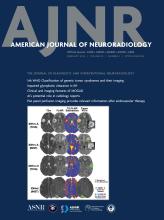The recent editorial in the American Journal of Neuroradiology (AJNR), titled “Realistic Productivity in Academic Neuroradiology: A National Survey of Neuroradiology Division Chiefs”1 prompts critical reflection on the correlation among workload, diagnostic errors, and the need for guidelines in academic neuroradiology in the United States. This discussion gains further depth when considering international perspectives, notably the recent position statement by the Japanese College of Radiology (JCR).2
The JCR, representing a large proportion of Japan's radiologists, acknowledges the unique challenges faced by its members, including a 4-fold increase in workload. In response, the JCR issued a position statement in 2022 recommending that radiologists’ reports be limited to less than 4 cross-sectional studies (encompassing not only neuroradiologic studies but all CT, MR imaging, and PET/CT across all organ systems) per hour of uninterrupted reading time. This recommendation aligns closely with the median of 32 cross-sectional studies proposed by the neuroradiology section chiefs in the United States, and 40 studies proposed in a study of the impact of shift volume on neuroradiology diagnostic errors.3 These thresholds prioritize patient safety and the quality of radiology services.
The landscape for assessing the neuroradiology workload and quality of service across the globe is very heterogeneous, making comparisons difficult. Significant differences in wealth across Africa, the Americas, Asia, Europe, and Oceania have a critical impact on the distribution of resources and the provision of imaging services. In addition to economic factors, the medical infrastructure and balance between public and private services are very diverse with a wide spectrum of radiology practices ranging from well-organized neuroradiology services, with established fellowships and strong national society presence, to those lacking formal structures and organizations. In many countries, neuroradiology studies are actually interpreted by general radiologists.
The role of radiologists goes beyond image interpretation to include choosing imaging modalities, managing protocols, and communicating effectively as valuable members of clinical teams along with referring physicians. These activities, though vital for patient safety, are time-consuming and need to be factored into workload considerations.
The juxtaposition of the US survey and the Japanese position statement underscores the need for international guidelines for neuroradiology workload. Establishing a safe number of interpreted cross-sectional studies per time unit is crucial for maintaining the quality of radiology services worldwide. Such guidelines should account for local practices, case complexity, and the broader responsibilities of neuroradiologists.
The dialogue initiated in the AJNR in the July 2023 issue represents a hopeful first step toward redefining neuroradiology workload standards. As we navigate the delicate balance between productivity and patient safety, it becomes imperative to develop international guidelines that encompass the diverse practices and challenges faced by neuroradiologists globally. In doing so, we can foster a worldwide commitment to excellence in neuroradiology while ensuring the well-being of both patients and practitioners.
References
- © 2024 by American Journal of Neuroradiology












